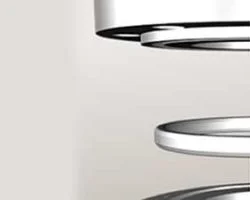
Description
Ring-type-Joint [RTJ] gaskets are fully metallic, milled gasket constructions, which are mainly used for applications with high pressures and/or temperatures. Typical applications are in refineries in the petrochemical industry. With regards to surface quality, that the flange and the gaskets have to have an accurately treated surface without scratches and damage.
IDT RTJ gaskets are manufactured following ASME B16.20 [DIN EN 12560-5] and API 6A for flanges according to API 6B and ASME/ ANSI B16.5 and ASME/ANSI B 16.47. Every ring joint gasket is allocated an identification number [R, BX, RX] which is described in the standard with regards to its dimensions using the ring number. A roughness of 1.6 Ra [6.4 Rz] should not be exceeded for the contact surfaces of the types R and RX; type BX requires a roughness of max. 0.8 Ra [3.2 Rz].
Ring-type-Joint gaskets are commonly distinguished according to two design:
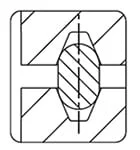
Oval
Style R | Profile RJ01
The oval form can also be used in flange connections with RTJ¬groove [flank angles 23°] according to the above mentioned norm. The spherical surface of the gasket is pressed against the cone surface of the flange when clamping it, which creates a linear contact between flange and gasket. The metal ring is deformed further with increasing assembly force and the contact surface is widened. The size of the sealing surface therefore depends on the applied assembly force; the oval shape is preferred if the bolt forces are low and the radial elongations/ offsets vary.
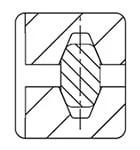
Octagonal
Style R | Profile RJ10
The octagonal design can also be used in flange connections with RTJ-groove [flank angles 23°] according to the above mentioned norm. Different to the oval form, an extensive stress is created right from the start on the contact surface gasket/flange. The sealing surface size is therefore independent from the assembly force; the octagonal type is the the preferred design.
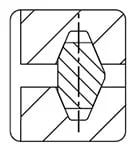
Octagonal
Style RX | Profile RJ20
The type RX is an optimised design of style R: octagonal. The gasket type fits the same groove flange as described for the R style and can also be easily used or replaced in this application. The RX style was optimised in such a way that the overall sealing force is increased via the internal pressure, and which in turn influences the gasket properties positively. This design can be fitted with an additional pressure balancing hole.
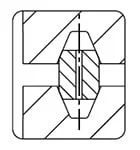
Octagonal
Style BX | Profile RJ30
The BX style is also a pressure optimised design; BX style can, however, not be exchanged with other styles and has been developed specifically for the API 6BX flange. This design can be fitted with an additional pressure balancing hole.
Because Ring Joint gaskets are used in extreme operating conditions, it is of utmost importance to select the most suitable, metallic material. In addition to pressure and temperature, the resistance towards the conveyed media has to be considered. The hardness of the gaskets should usually be lower than that of the flange material in order to prevent mechanical damage to the flange.
The maximum values for the hardness are specified for the different materials as per ASME B 16.20 / API 6A.
Additional materials on request